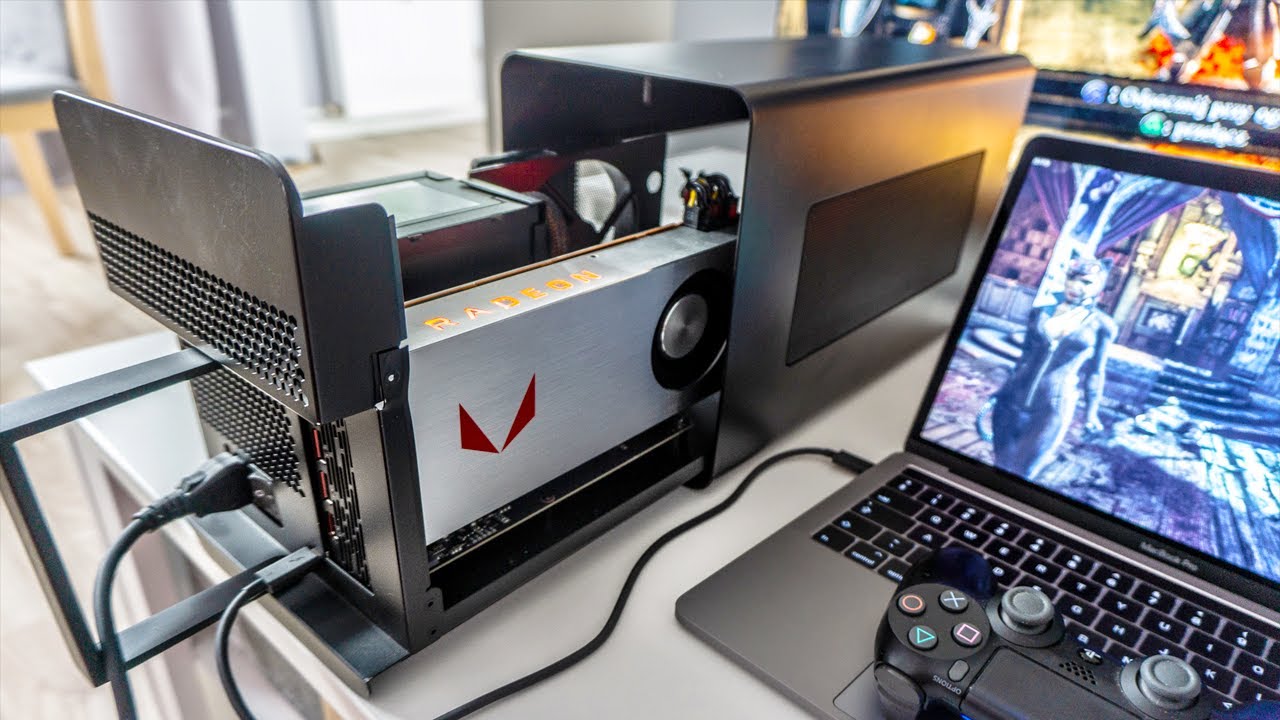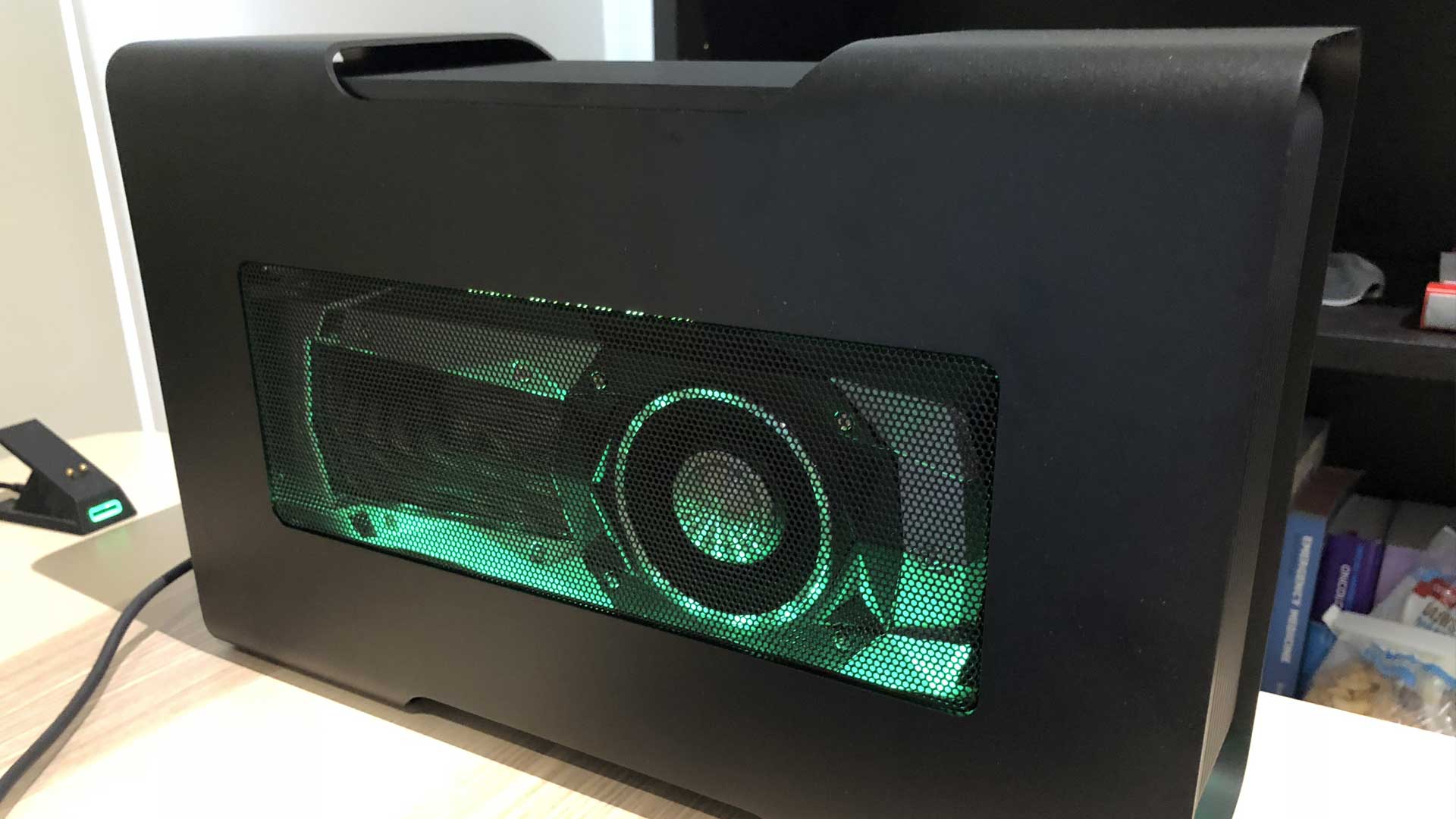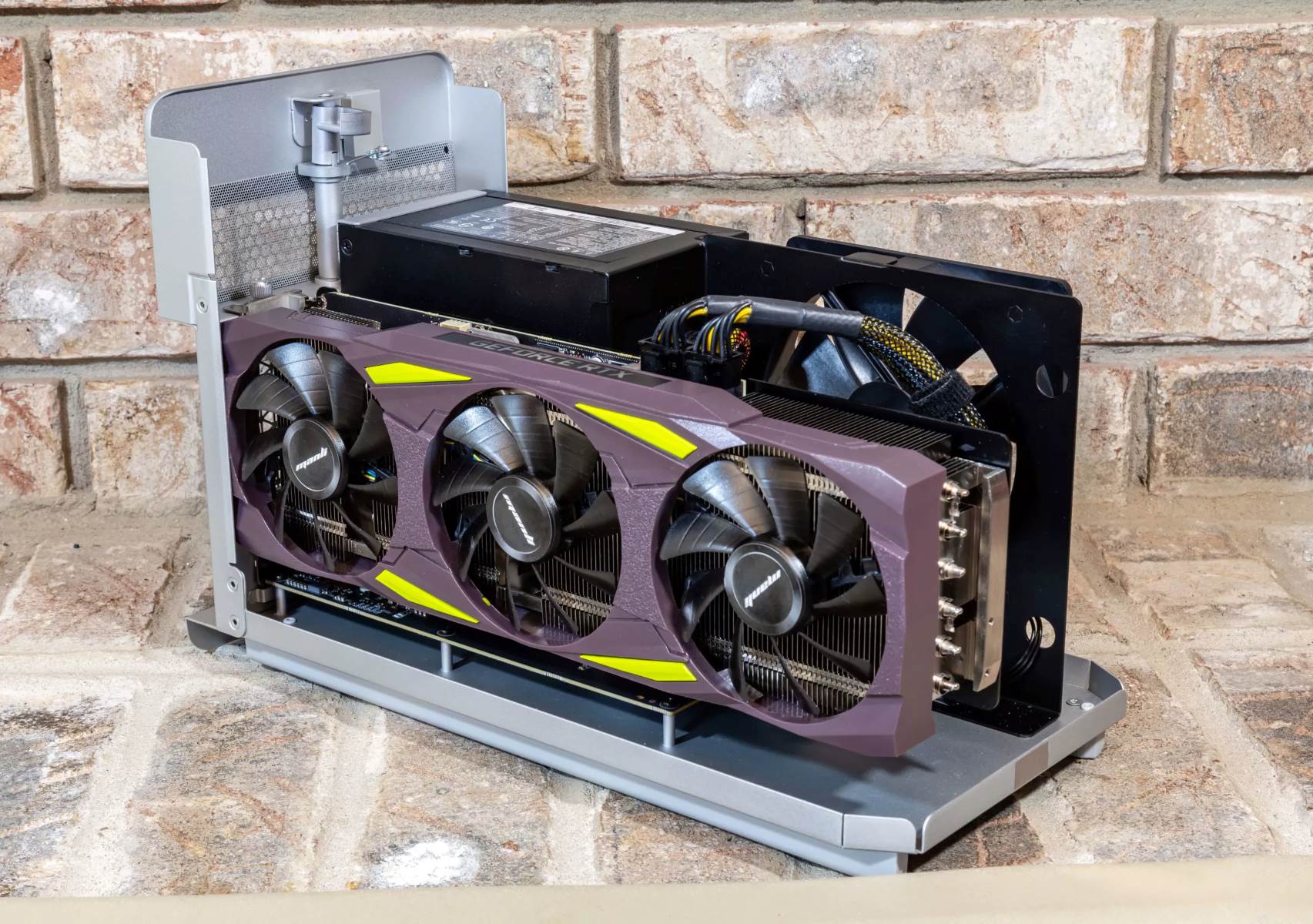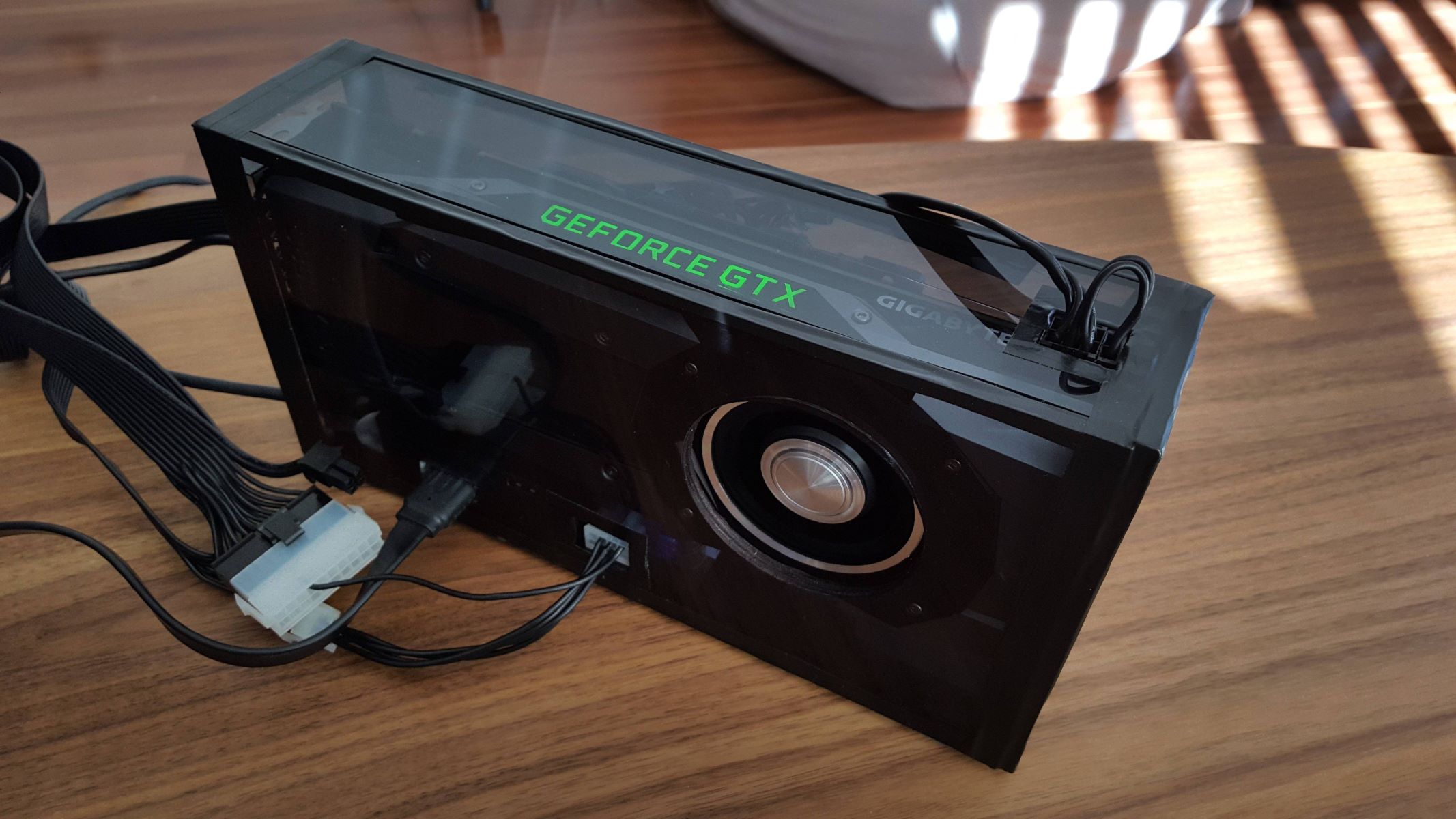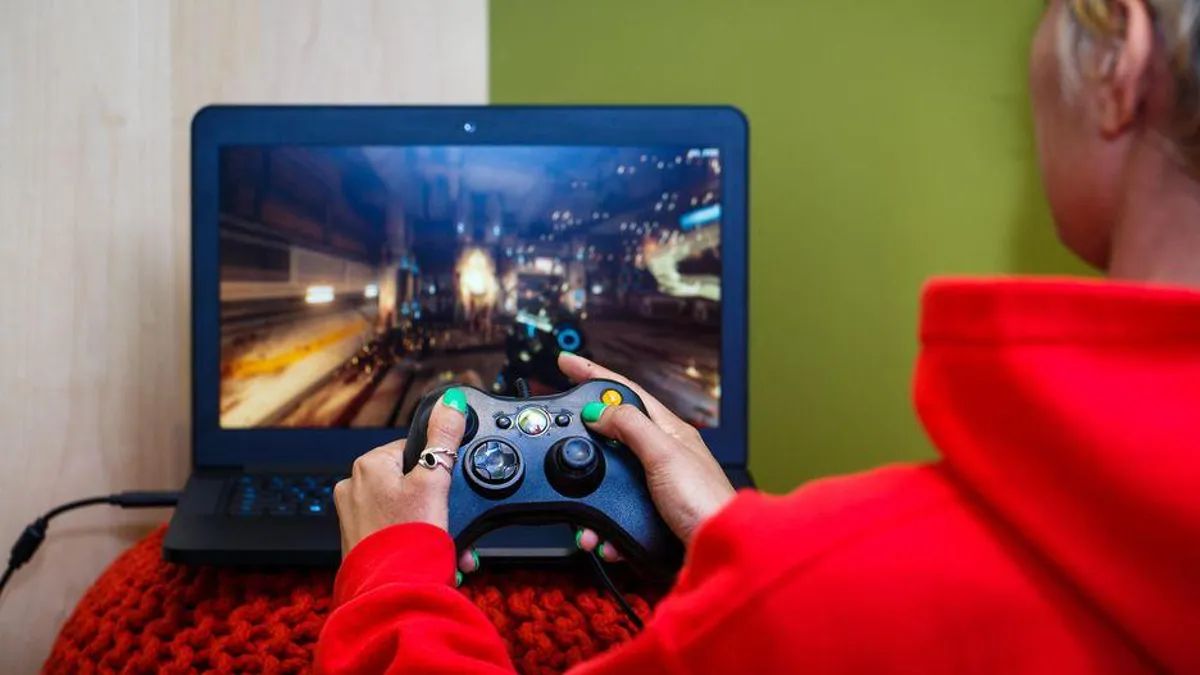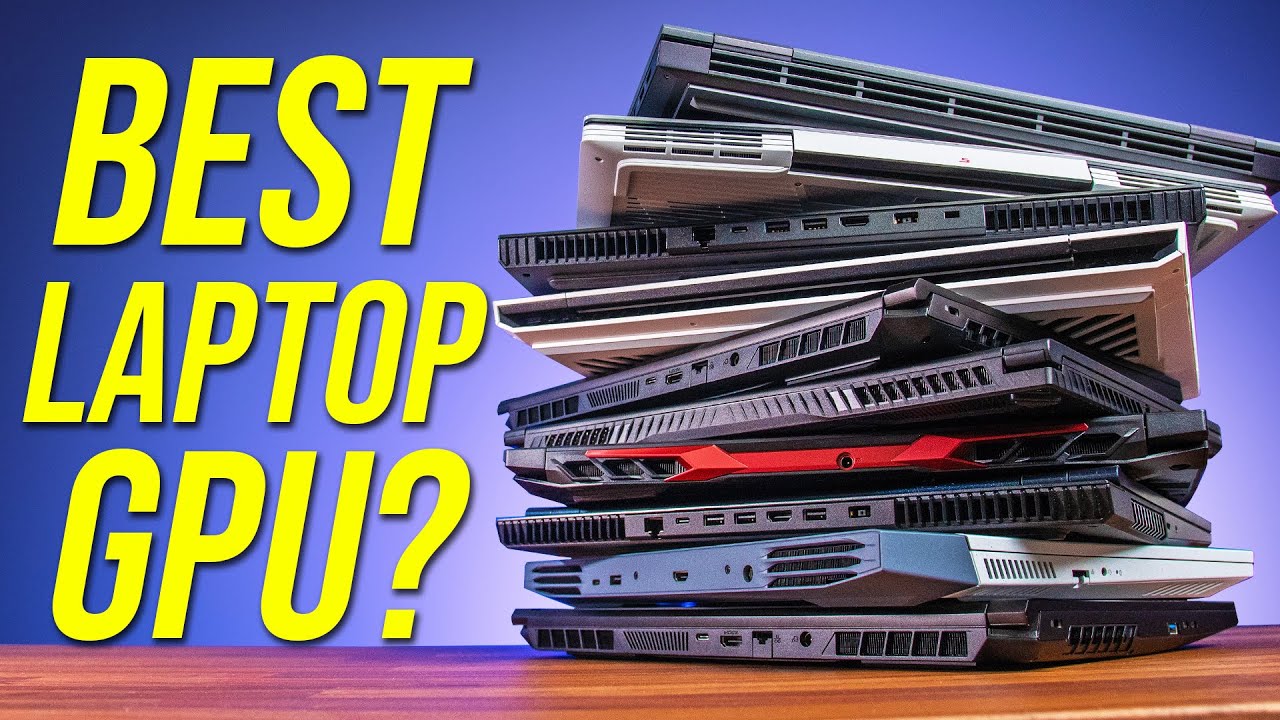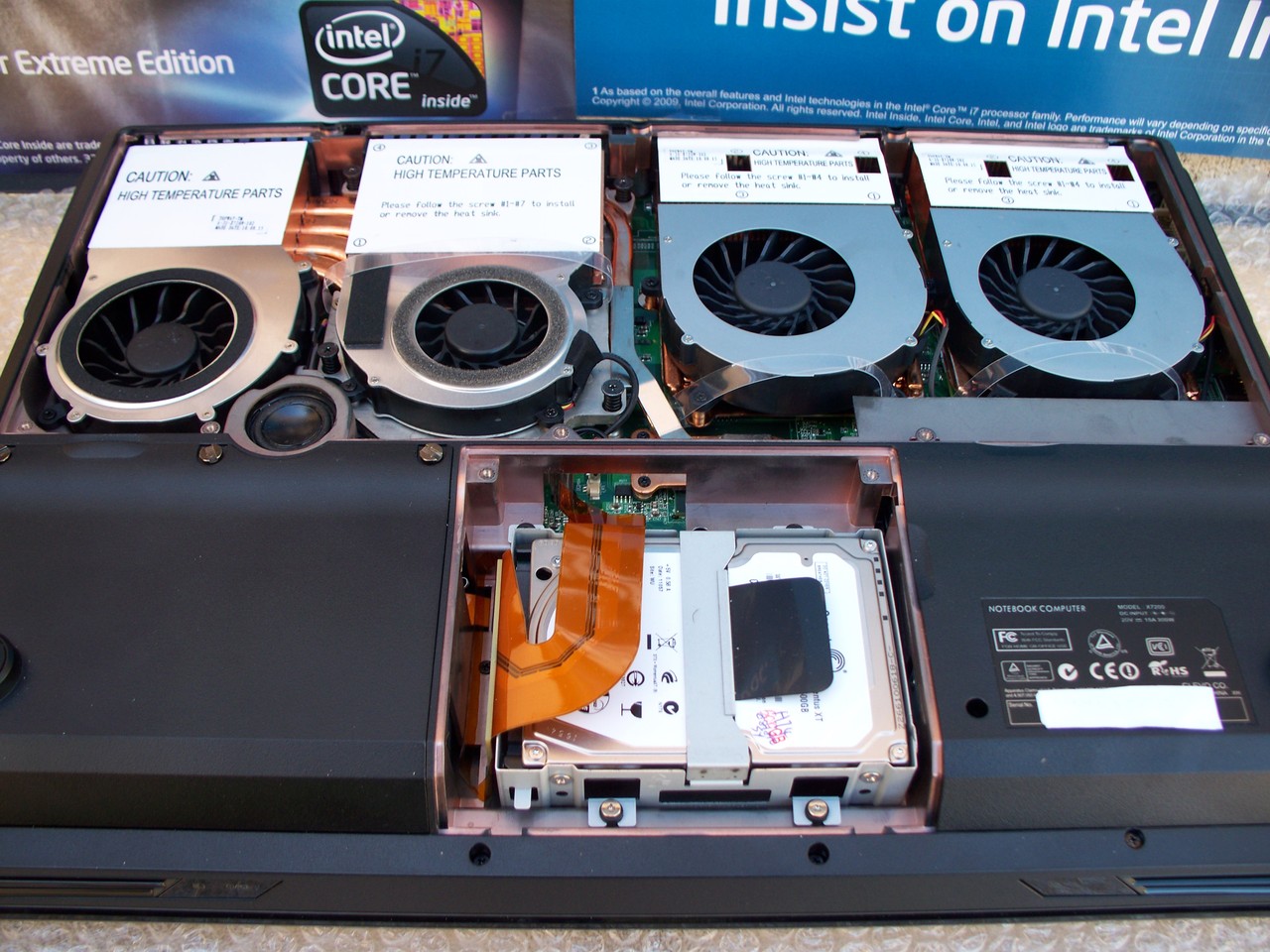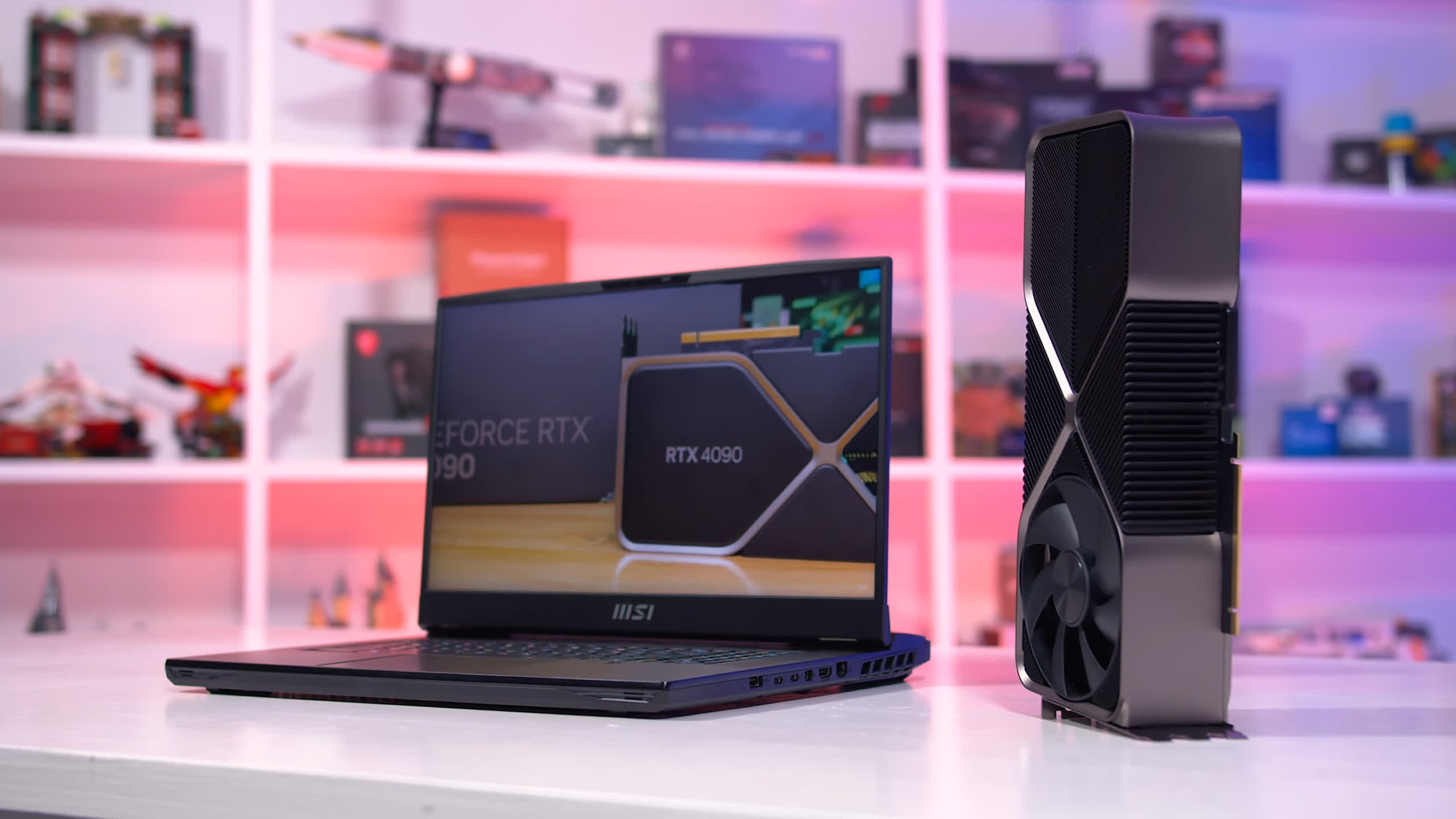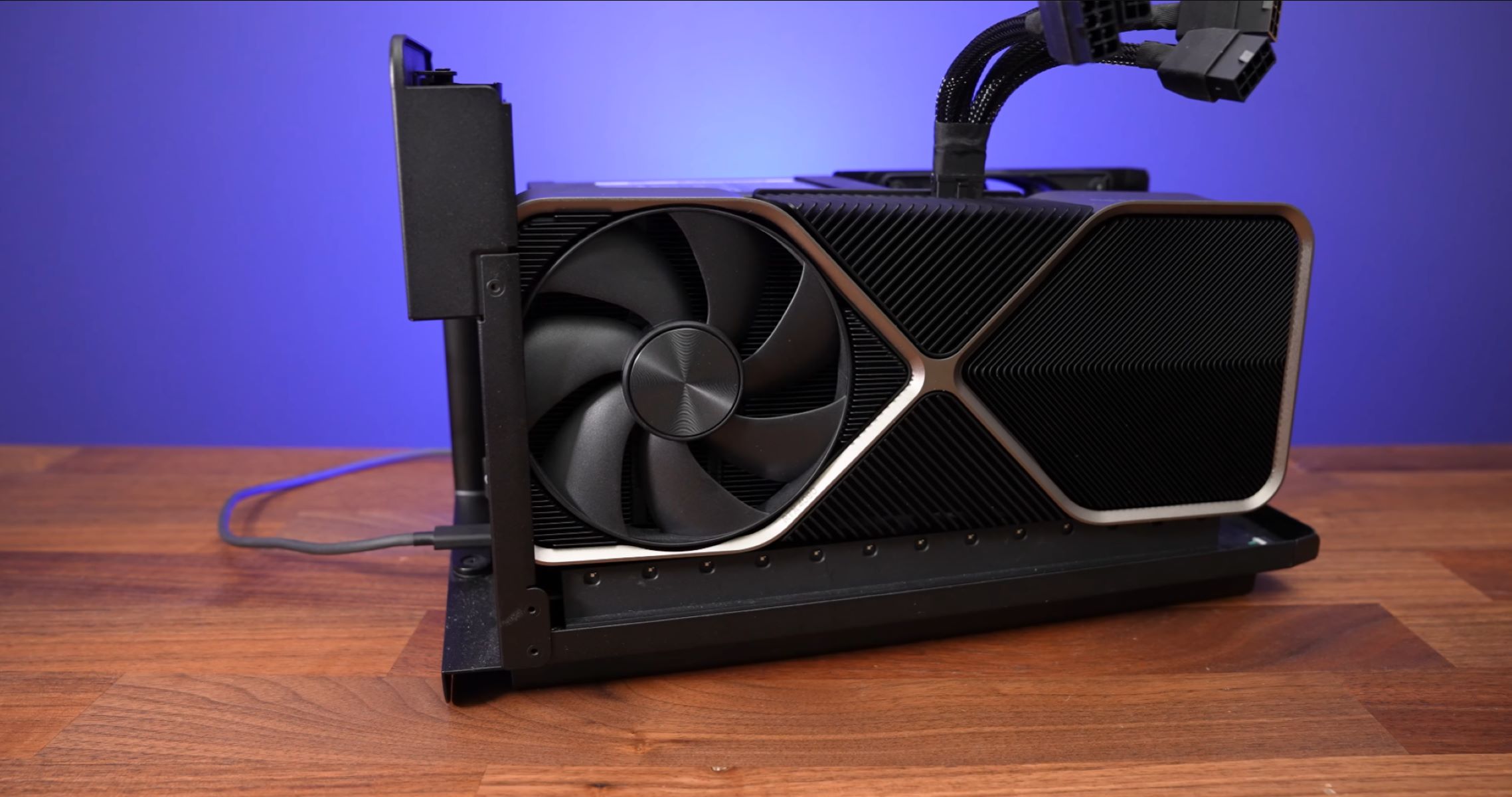Introduction
As technology continues to advance, so do the demands for powerful graphics processing units (GPUs) to fuel our digital experiences. However, for laptop users, upgrading the GPU can be a challenging task due to their limited hardware capabilities and portability constraints. This is where external GPUs come to the rescue.
An external GPU, also known as an eGPU, is a separate graphics card that can be connected to a laptop or a desktop computer through a Thunderbolt or USB-C connection. This allows users to harness the power of a dedicated GPU for tasks such as gaming, video editing, and 3D rendering, without needing to invest in a new laptop or desktop with a built-in high-performance GPU.
The benefits of using an external GPU are vast. Firstly, it allows users to significantly enhance the graphics capabilities of their laptops, which are typically equipped with integrated or low-powered GPUs. This translates into smoother gaming experiences, faster video rendering, and improved overall performance for resource-intensive tasks.
Moreover, external GPUs offer flexibility and future-proofing. Users can choose the GPU model that best suits their needs and budget, and easily upgrade or replace it as new generations of GPUs are released. This eliminates the need to replace the entire laptop or desktop when seeking better graphics performance.
Compatibility is a crucial factor to consider when using an external GPU. Not all laptops are compatible with external GPU enclosures, and system requirements can vary. Generally, laptops that have Thunderbolt 3 or USB-C ports with Thunderbolt support are more likely to be compatible. It is also essential to ensure that the laptop’s firmware and drivers are up to date.
Choosing the right external GPU enclosure is another key consideration. The enclosure houses the graphics card and connects it to the laptop. It should have proper power delivery, cooling mechanisms, and sufficient space to accommodate the chosen GPU model. Researching and comparing different options and reading user reviews can help in making an informed decision.
Once the external GPU enclosure is selected, setting it up is a relatively straightforward process. The enclosure typically requires a power supply connection and connecting to the laptop using the Thunderbolt or USB-C cable. Following the manufacturer’s instructions and any accompanying software installation guides will ensure a smooth setup process.
After the physical setup, installing the necessary drivers and software is essential for the external GPU to function correctly. This involves downloading and installing the appropriate GPU drivers from the manufacturer’s website and configuring the laptop’s settings to recognize and utilize the external GPU for specific applications.
In this article, we will guide you through the process of connecting an external GPU to your laptop, including choosing the right enclosure, setting it up, installing necessary drivers and software, and troubleshooting common issues. By the end, you’ll have the knowledge and confidence to harness the power of an external GPU and unlock new possibilities for your laptop’s graphics performance.
What is an external GPU?
An external GPU, also known as an eGPU, is a separate graphics processing unit that can be connected to a laptop or desktop computer. It offers a solution for users who require powerful graphics capabilities but do not want to invest in a new system or face the limitations of their laptop’s integrated or low-powered GPU.
Typically, laptops come with integrated GPUs, which are integrated into the motherboard and share resources with the CPU. While integrated GPUs are suitable for everyday tasks, they may not have the processing power required for demanding applications such as gaming, video editing, or 3D rendering.
By connecting an external GPU to a laptop, users can tap into the power of a dedicated graphics card. This provides a significant boost in graphics performance, allowing for smoother gameplay, faster image and video rendering, and improved overall system performance.
The external GPU connects to the laptop using various interfaces, most commonly Thunderbolt 3 or USB-C ports with Thunderbolt support. These interfaces offer high bandwidth and low latency, ensuring a seamless connection between the laptop and the external GPU.
External GPUs come in the form of an enclosure that houses the graphics card. The enclosure provides power to the GPU, cooling mechanisms to dissipate the heat generated by the GPU, and ports to connect peripherals such as monitors and other devices.
One of the significant advantages of using an external GPU is the flexibility it offers. Users can choose the specific GPU model that meets their requirements and budget. This means that they are not limited to the GPU options available in pre-built laptops, which are often more expensive and offer limited customization.
Additionally, external GPUs allow for future-proofing a system. As new GPU technologies and generations are released, users can easily upgrade or replace their external GPU without needing to replace the entire system. This makes it a cost-effective solution for those who wish to stay at the cutting edge of graphics performance.
External GPUs are not only beneficial for laptops but also for desktop computers. Users with older desktop systems can give their machines a graphics boost by connecting an external GPU, eliminating the need for a complete system overhaul.
Overall, an external GPU offers a powerful solution for those who require enhanced graphics performance on their laptops or desktops. It provides a cost-effective way for users to enjoy smooth gaming experiences, faster rendering times, and improved system performance without the need to invest in a new system.
Benefits of using an external GPU
Using an external GPU, or eGPU, offers a range of benefits that can greatly enhance your computing experience. Whether you’re a gamer, a content creator, or someone who requires powerful graphics processing, incorporating an external GPU into your setup can provide the following advantages:
- Improved Graphics Performance: The primary benefit of using an external GPU is the significant boost in graphics performance. By utilizing a dedicated high-performance graphics card, you can achieve smoother gameplay, faster rendering times, and enhanced visuals for applications such as gaming, video editing, and 3D modeling.
- Flexibility and Customization: Unlike pre-built laptops or desktops with fixed GPU options, external GPUs offer the flexibility to choose the specific graphics card that meets your requirements and budget. This means you can customize your setup according to your needs and easily upgrade or replace the external GPU as new models are released.
- Cost-Effectiveness: Upgrading a laptop or desktop with a built-in GPU can be expensive and sometimes even impossible due to hardware limitations. With an external GPU, you can enhance your graphics performance without the need to invest in a new system. This makes it a more cost-effective solution, particularly for laptop users who can’t easily upgrade their internal components.
- Portability: External GPUs are designed to be portable and easily connectable to laptops or desktops. This means you can enjoy the benefits of powerful graphics processing whether you’re at home, in the office, or on the go. Just plug in the external GPU and enhance your graphics performance wherever you are.
- Future-Proofing: Technology is continually evolving, and graphics card technology is no exception. With an external GPU, you can future-proof your setup by easily upgrading or replacing the GPU as new generations are released. This allows you to stay at the forefront of graphics performance without having to replace your entire system.
- Multi-Monitor Support: Many external GPU enclosures come with multiple display ports, allowing you to connect multiple monitors to your laptop or desktop. This can greatly enhance productivity by providing a larger workspace for multitasking or improving immersion in gaming and multimedia experiences.
Overall, using an external GPU delivers tangible benefits in terms of improved graphics performance, flexibility, cost-effectiveness, portability, future-proofing, and multi-monitor support. Whether you’re a gamer looking for smoother gameplay or a content creator seeking faster rendering times, integrating an external GPU into your setup can take your computing experience to the next level.
Compatibility and System Requirements
Before diving into the world of external GPUs, it’s crucial to understand the compatibility and system requirements to ensure a seamless and successful setup. Not all laptops and desktops are compatible with external GPU enclosures, and various factors should be taken into consideration:
- Port Compatibility: External GPUs typically connect to your laptop or desktop computer using Thunderbolt 3 or USB-C ports with Thunderbolt support. These provide high bandwidth and low latency connections, allowing for optimal performance. It is important to ensure that your device has the appropriate port available for connecting the external GPU enclosure.
- Operating System and Driver Support: Different operating systems may have varying levels of compatibility with external GPUs. Additionally, the availability of drivers for your specific GPU model is essential for proper functioning. It is advised to check the system requirements and supported operating systems for both the external GPU enclosure and the chosen graphics card.
- Power Delivery: External GPU enclosures require a power supply to provide sufficient power to the graphics card. It is essential to ensure that the enclosure is compatible with your power supply and that it can deliver enough power to support the GPU without causing any power-related issues or performance limitations.
- System BIOS and Firmware Updates: Updating your laptop or desktop’s BIOS and firmware can address issues related to compatibility with external GPUs. It is advisable to check for any available updates from your device’s manufacturer and install them before connecting the external GPU. This ensures that your system recognizes and functions properly with the external GPU enclosure.
- Driver and Software Compatibility: Installing the correct GPU drivers and accompanying software is crucial for optimal performance. Ensure that the drivers are up to date and compatible with both your GPU model and your operating system. Some external GPU enclosures may also require specific software to manage the connection and performance settings.
- System Resource Requirements: In addition to the hardware compatibility, it’s important to consider the resource requirements of the applications you plan to use with the external GPU. For example, resource-intensive games or applications may require a certain amount of RAM, CPU power, or storage space to fully utilize the capabilities of the external GPU.
It is recommended to thoroughly research and verify the compatibility and system requirements of both your laptop or desktop and the desired external GPU enclosure before making any purchases. Reading user reviews, consulting manufacturer specifications, and seeking guidance from expert communities or support forums can provide valuable insights and help ensure a smooth and successful integration of an external GPU into your system.
Choosing the Right External GPU Enclosure
When it comes to choosing the external GPU enclosure for your setup, several factors should be considered to ensure compatibility, performance, and future expandability. Here are some key considerations to keep in mind:
- Form Factor: External GPU enclosures come in various shapes and sizes. Some are compact and portable, while others are larger for better cooling and expandability. Consider the available space you have for the enclosure and factor in any future plans for expansion or upgrading.
- Power Delivery: The external GPU enclosure must provide enough power to the graphics card for optimal performance. Ensure that the enclosure has an adequate power supply unit (PSU) that can handle the power requirements of the GPU you plan to install. Manufacturers typically specify the supported power limits for their enclosures, so check for compatibility with your chosen GPU.
- Cooling Mechanisms: Heat dissipation is crucial for maintaining optimal GPU performance and longevity. Look for enclosures that feature efficient cooling systems, such as fans or heatsinks, to ensure proper heat management during extended gaming or resource-intensive tasks. Adequate cooling helps prevent thermal throttling and improves overall system stability.
- Ports and Expandability: Consider the number and types of ports available on the external GPU enclosure. Depending on your needs, you may require additional USB, Ethernet, or audio ports for connecting peripherals or expanding connectivity options. Evaluate the enclosure’s compatibility with the devices you typically use and consider any future expansion needs.
- Price and Value: The cost of external GPU enclosures can vary greatly depending on their features, brand, and build quality. It’s essential to find a balance between your budget and the desired features. Consider the reliability, warranty, and user reviews to assess the value of the enclosure and ensure it offers a satisfactory price-performance ratio.
- Compatibility and upgradability: Verify the compatibility of the enclosure with your laptop or desktop system. Check the specific interfaces required (e.g., Thunderbolt 3, USB-C) and ensure that your system supports them. Additionally, consider future upgradability and expansion possibilities. Look for enclosures that accommodate various GPU sizes and have compatibility with future GPU generations.
Researching and comparing different external GPU enclosures can help you make an informed decision. Consider user reviews, technical specifications, and compatibility with the GPU models you are interested in. Manufacturer websites, online retailers, and tech forums can provide valuable insights and recommendations from users who have already tested various enclosures.
Remember that choosing the right external GPU enclosure is crucial for a successful and satisfying external GPU experience. By considering factors such as form factor, power delivery, cooling mechanisms, ports, pricing, and compatibility, you can find an enclosure that meets your needs, enhances your system’s performance, and allows for future upgrades as needed.
Setting up the External GPU Enclosure
Once you have selected the right external GPU enclosure, it’s time to set it up and prepare it for connecting to your laptop or desktop computer. Proper setup ensures a smooth and error-free integration of the external GPU into your system. Here are the essential steps to follow:
- Read the Instructions: Start by carefully reading and understanding the manufacturer’s instructions that come with the external GPU enclosure. Each enclosure may have specific setup requirements or steps that need to be followed for optimal performance.
- Prepare the Enclosure: If necessary, open the enclosure and ensure all components are properly aligned and secured. Make sure any necessary screws or fasteners are in place to hold the graphics card securely in the enclosure. Additionally, check that any necessary cables or connectors are included and ready for installation.
- Connect Power and Cables: Connect the power supply to the external GPU enclosure as per the manufacturer’s instructions. Ensure a secure connection to avoid power interruptions while the GPU is in use. Connect any accompanying cables, such as USB or Thunderbolt cables, to the appropriate ports on both the enclosure and your laptop or desktop.
- Positioning the External GPU: Decide on the optimal placement of the external GPU enclosure. It is advisable to place it in a well-ventilated area to facilitate efficient cooling. Avoid placing the enclosure near walls or other objects that could restrict airflow and potentially lead to overheating.
- Connect the External GPU to Your Laptop or Desktop: With the power and cables properly connected, it is now time to connect the external GPU to your laptop or desktop. Plug in the Thunderbolt or USB-C cable from the enclosure into the corresponding port on your device, ensuring a secure connection to establish communication between the GPU and your system.
- Power On Your System: Power on your laptop or desktop computer. The system should detect the connected external GPU automatically. However, in some cases, you may need to access your system’s BIOS or UEFI settings to enable external GPU support. Consult your system’s documentation for instructions on accessing these settings.
- Install GPU Drivers and Software: To ensure proper functionality and performance, it is crucial to install the appropriate drivers for your specific GPU model. Visit the GPU manufacturer’s website and download the latest drivers for your operating system. Follow the installation instructions provided by the manufacturer, and restart your system if prompted.
- Configure GPU Settings: Depending on your operating system or GPU software, you may need to adjust settings to enable the external GPU’s usage for specific applications or games. This can typically be done through the GPU control panel or settings interface. Consult the GPU manufacturer’s documentation or online resources for guidance on configuring settings to maximize the benefits of your external GPU.
By following these steps, you can set up the external GPU enclosure and establish a connection between your laptop or desktop and the dedicated graphics card. Ensure that you consult the manufacturer’s instructions and documentation throughout the process to avoid any potential issues. With the external GPU properly set up, you can now enjoy enhanced graphics performance for gaming, content creation, and other GPU-intensive tasks.
Connecting the External GPU to Your Laptop
Now that you have set up the external GPU enclosure, it’s time to connect it to your laptop and establish a seamless connection. Follow these steps to connect your external GPU to your laptop:
- Check Cable Compatibility: Ensure that you have the appropriate cable for connecting the external GPU enclosure to your laptop. Most enclosures use Thunderbolt 3 or USB-C cables, so make sure your laptop has the corresponding port.
- Power Off Your Laptop: Before proceeding, it’s important to power off your laptop completely. This ensures that the external GPU can be recognized and configured correctly.
- Connect the Cable: Connect one end of the cable to the port on the external GPU enclosure, and the other end to the Thunderbolt 3 or USB-C port on your laptop. Ensure a snug and secure connection.
- Power on the External GPU Enclosure: Follow the manufacturer’s instructions to turn on the external GPU enclosure. This will power up the graphics card and initialize the connection between the enclosure and your laptop.
- Power on Your Laptop: Once the external GPU enclosure is powered on, start your laptop as you would normally. The operating system should detect the external GPU and begin the process of installing any necessary drivers.
- Install GPU Drivers if Needed: Depending on your laptop’s operating system, you may need to install drivers specific to your external GPU. Visit the GPU manufacturer’s website and download the latest drivers for your GPU model. Follow the installation instructions provided by the manufacturer.
- Configure Graphics Settings: After the drivers are installed, you may need to configure the graphics settings on your laptop to use the external GPU for specific applications or games. This can usually be done in the graphics settings or control panel of your operating system. Consult the GPU manufacturer’s documentation for guidance on configuring the settings.
- Test and Verify: Once the external GPU is connected and the drivers and settings are configured, it’s time to test the setup. Launch applications or games that demand high graphics performance and ensure that they are running smoothly and utilizing the external GPU. Monitor the temperature and performance of the GPU using manufacturer-supplied software, if available.
By following these steps and ensuring a secure and correct connection, you can harness the power of an external GPU and enhance your laptop’s graphics performance significantly. Remember to consult the manufacturer’s instructions and documentation for specific guidance on your external GPU enclosure to ensure a successful connection.
Installing Necessary Drivers and Software
Once the external GPU is connected to your laptop, the next step is to install the necessary drivers and software to ensure proper functionality and optimal performance. Follow these steps to install the required drivers:
- Identify the GPU Model: Take note of the specific model of your external GPU. This information can usually be found on the GPU or the external GPU enclosure itself.
- Visit the Manufacturer’s Website: Go to the website of the GPU manufacturer (e.g., Nvidia, AMD) and navigate to the support or drivers section.
- Find the Latest Drivers: Look for the latest drivers compatible with your GPU model and operating system. Download the appropriate drivers to your laptop.
- Uninstall Existing GPU Drivers: If you already have GPU drivers installed on your laptop, it is advisable to uninstall them before proceeding with the installation of the new drivers. Use the Device Manager in your operating system to uninstall the existing GPU drivers.
- Run the Driver Installer: Locate the downloaded GPU driver file and run the installer. Follow the on-screen instructions to proceed with the installation. It is recommended to choose the “Clean” or “Custom” installation option, allowing you to select specific components and avoid unnecessary software.
- Restart Your Laptop: After the driver installation is complete, restart your laptop to ensure that the changes take effect and the new drivers are properly integrated.
- Configure GPU Settings: Depending on the GPU manufacturer and model, you may need to adjust additional settings for optimal performance. This includes configuring options such as power management, performance profiles, or display settings. Refer to the manufacturer’s documentation or control panel software for guidance on configuring these settings.
- Install Additional Software: Some external GPU enclosures may come with accompanying software that allows you to monitor and control various aspects of the GPU’s performance. Check the manufacturer’s website or the documentation that comes with the enclosure for any additional software that may need to be installed.
- Run System Updates: After installing the necessary drivers and software, run system updates for your operating system to ensure that all other components and drivers are up to date.
- Test Graphics Performance: Launch applications or games that demand high graphics performance to test and verify that the external GPU is functioning correctly. Monitor the performance and temperature of the GPU using manufacturer-supplied software, if available, to ensure optimal performance and prevent overheating.
By following these steps and carefully installing the necessary drivers and software for your external GPU, you can ensure that it is fully integrated into your system and ready to deliver enhanced graphics performance for gaming, content creation, and other GPU-intensive tasks.
Troubleshooting Common Issues
While setting up and using an external GPU can greatly enhance your laptop’s graphics performance, it’s not uncommon to encounter some issues along the way. Here are some common issues that may arise and steps you can take to troubleshoot them:
- Driver Installation Errors: If you encounter errors during the installation of GPU drivers, ensure that you have downloaded the correct drivers for your specific GPU model and operating system. Try running the driver installer as an administrator and disable any antivirus or firewall software temporarily to see if that resolves the issue.
- Connection Issues: If your laptop fails to recognize the external GPU, ensure that the cable connections are secure and properly seated. Try using a different cable or port on your laptop to rule out any cable or port-related issues. Additionally, make sure that your operating system has the necessary updates and patches installed.
- Power Supply Problems: If the external GPU is not receiving sufficient power or not powering on at all, check the power supply connections and ensure they are properly plugged in. Verify that the power supply unit is compatible with your specific GPU model and that it can deliver adequate power. Consider using a separate power outlet or power strip to eliminate any potential power-related issues.
- Compatibility Issues: If your laptop is not recognizing the external GPU or the GPU is not working as expected, check for compatibility issues. Ensure that your laptop supports external GPU connectivity through Thunderbolt 3 or USB-C ports. Update your laptop’s BIOS or UEFI firmware to the latest version to improve compatibility. Consult the manufacturer’s documentation or support resources for further guidance.
- Overheating and Thermal Throttling: If your external GPU is running hot or experiencing thermal throttling, ensure that the enclosure has adequate cooling mechanisms such as fans or heatsinks. Make sure the enclosure is properly ventilated and not obstructed by any objects. Consider adjusting the GPU fan curve using manufacturer-supplied software to increase cooling performance. Additionally, check and clean the GPU and enclosure for any dust buildup that may be affecting heat dissipation.
- Application-specific Issues: If you experience issues with specific applications or games, ensure that the latest patches or updates for those applications are installed. Check the application’s settings or options to verify that it is utilizing the external GPU. You can often specify in the application’s settings which GPU to use. Consult the application developer’s support resources or user forums for assistance with any application-specific issues.
If you encounter persistent issues and cannot resolve them using the troubleshooting steps above, it may be helpful to consult the manufacturer’s support resources or reach out to their customer support for further assistance. Additionally, online communities or forums dedicated to external GPUs can provide valuable insights and solutions from other users who may have faced similar issues.
Remember to be patient and thorough when troubleshooting issues with your external GPU setup. By addressing common issues and seeking appropriate guidance, you can ensure that your external GPU is functioning optimally and providing the enhanced graphics performance you desire.
Conclusion
In conclusion, incorporating an external GPU into your laptop setup can unlock a whole new level of graphics performance and expand the capabilities of your system. Whether you’re a gamer looking for smoother gameplay, a content creator in need of faster rendering times, or someone who requires powerful graphics processing for other GPU-intensive tasks, an external GPU offers a cost-effective and flexible solution.
Throughout this article, we have discussed the benefits of using an external GPU, including improved graphics performance, flexibility, cost-effectiveness, portability, future-proofing, and multi-monitor support. We have explored the factors to consider when selecting an external GPU enclosure, such as form factor, power delivery, cooling mechanisms, ports, pricing, and compatibility. It is important to carefully choose the right enclosure to ensure optimal performance and ease of use.
We have also covered the steps to set up the external GPU enclosure, including connecting the necessary cables, powering on the enclosure, and configuring the system settings. Additionally, we have outlined the process of installing the required drivers and software to ensure proper functionality and optimal performance of the external GPU.
In the event that you encounter any issues while setting up or using the external GPU, we have provided troubleshooting steps for common problems. By following these steps and seeking appropriate guidance, you can overcome challenges and ensure that your external GPU integration is successful.
With an external GPU, you can harness the power of a dedicated graphics card, significantly enhancing your laptop’s graphics performance without the need to invest in a new system. This allows you to enjoy smoother gameplay, faster rendering times, and improved overall system performance for a variety of tasks.
As technology continues to evolve, external GPUs provide a versatile, cost-effective, and future-proof solution for those who seek enhanced graphics capabilities. By following the steps outlined in this article and remaining diligent in troubleshooting any issues, you can unleash the full potential of your laptop with an external GPU.







